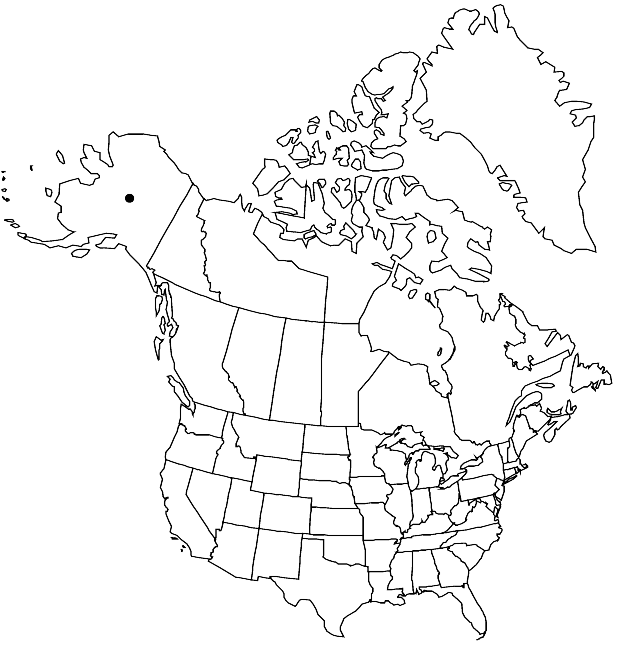Salix nummularia
in A. P. de Candolle and A. L. P. P. de Candolle, Prodr. 16(2): 298. 1868.
Plants 0.01–0.03 m, (dwarf), forming clones by layering. Stems trailing; branches yellow-brown or red-brown, glabrous; branchlets yellow-brown or red-brown, pubescent, pilose, or glabrescent. Leaves: stipules absent or rudimentary; petiole 1.5–2 mm (glabrous or pubescent adaxially); largest medial blade (2 pairs of secondary veins arising at or close to base, arcing toward apex) broadly elliptic, subcircular, broadly ovate, or elliptic, 9–22(–30) × 7.5–14(–19) mm, 1.2–2 times as long as wide, base rounded, subcordate, cordate, or convex, margins flat or slightly revolute, entire or serrulate, apex convex, rounded, or retuse, abaxial surface glabrous, adaxial highly glossy, glabrous; proximal blade margins entire or serrulate; juvenile blade pilose or puberulent abaxially. Catkins: from lateral buds; staminate (3–8 flowers), 3.2–6.6 × 2–5.2 mm, flowering branchlet 0.8–4.6 mm; pistillate loosely flowered (3–5 flowers), shape indeterminate, 7.5–13 × 3–10 mm, flowering branchlet 0.5–10 mm; floral bract tawny, 0.6–1.4 mm, apex rounded or truncate, entire, abaxially glabrous or sparsely hairy. Staminate flowers: abaxial nectary (0.3–)0.5–0.7 mm, adaxial nectary narrowly oblong or oblong, 0.7–1.1 mm, nectaries distinct, or connate and cup-shaped; filaments distinct or connate less than 1/2 their lengths, glabrous; anthers ellipsoid, 0.4–0.5 mm. Pistillate flowers: abaxial nectary (0–)0.6–0.9 mm, adaxial nectary narrowly oblong or oblong, 0.6–1.4 mm, longer than stipe, nectaries connate and shallowly cup-shaped; stipe 0–0.7 mm; ovary pyriform, glabrous, beak slightly bulged below styles; ovules 8–10 per ovary; styles 0.2–1 mm; stigmas flat, abaxially non-papillate with rounded tip, or broadly cylindrical, 0.2–0.27–0.32 mm. Capsules 3.5–7.5 mm. 2n = 38.
Phenology: Flowering late Jun-early Aug (based on Russian collections).
Habitat: Exposed, relatively dry, stony, moss-lichen, and moss tundra, polygonal tundra, outcrops, marine sediments, sand dunes, restricted to snow-free areas, usually on acidic substrates
Elevation: 0-1900 m
Distribution

Alaska, Asia (China [Jilin], Chukotka, Japan [Hokkaido], North Korea, Russian Far East, arctic, e Siberia).
Discussion
Salix nummularia occurs in Alaska on St. Paul Island.
Selected References
None.